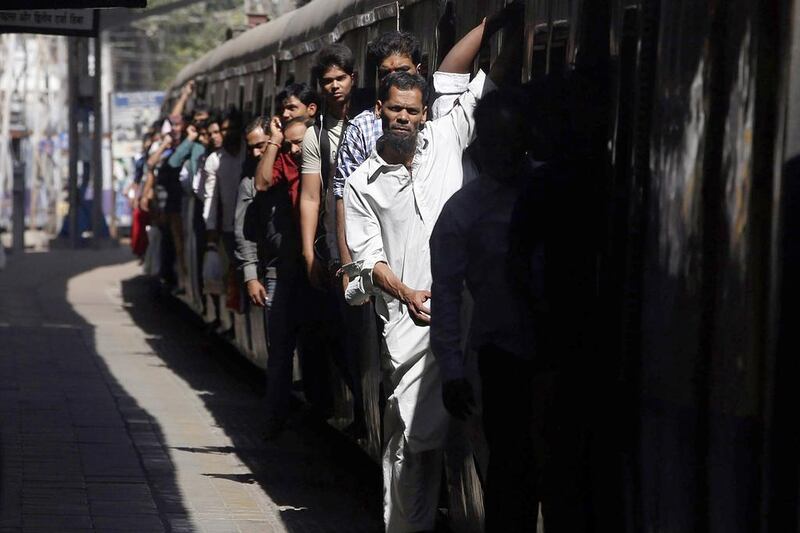I was elated by the sight of lush green wheat crops swaying in the morning winter sun, rushing past my window as I sat in the chugging train. Tiny specks of coal dust flew from the steam engine into our compartment. At the age of six, in 1926, I did not mind that the particles blackened my face and clothes. It was a treat for me to accompany my father by train to Samundri (in Punjab, in undivided British India, now in Pakistan), where he owned wheat fields. To add to the joy of the train odyssey was a package of home-cooked aloo parathas (potato pancakes).
As I grew older, trains became an integral part of my life. We travelled frequently by train to Nankana Saheb, a religious town. The whole experience – from the shrill train whistle before we departed to the guard waving his green flag, the station master blowing his whistle and the hawkers scurrying to sell samosas – was enchanting.
Later, my work as an auditor took me by train to far-flung corners of India. I learnt that the railways were one of the greatest contributions made by the British to my country.
India is a vast nation of 3.3 million square kilometres and the railways form the network through which people and goods flow. Building the railways was no mean task. Planning the lines, laying the steel rails, constructing stations, manufacturing engines and coaches, and building thousands of bridges across vast rivers and valleys, must have required epic engineering skills.
Now Indian Railways runs 19,000 trains a day, of which 12,000 carry more than 23 million passengers and 7,000 carry 3 million tonnes of freight. A track length of 115,000 kilometres connects 8,000 stations. During the past 70 years, steam engines have been replaced by diesel and electric locomotives, and air-conditioned coaches have made travel more comfortable.
However, the charm of the railways has been dampened by horrific accidents, inefficiencies and delays. Just a week ago, a train derailed in north India, killing more than 145 passengers and injuring about 200. It has been blamed on a fracture in the ageing rails.
Rail accidents in India are typically caused by decaying infrastructure, along with human error and mismanagement. The sheer pressure of moving millions of passengers and massive freight tonnages each day takes it toll. Since 1950, passenger numbers have increased five-fold and 13 times as much freight is being handled. But the amount of track has only doubled.
There is a severe neglect of passenger safety. Almost five years after former Atomic Energy Commission chairman Anil Kakodkar handed down a report on rail safety, his recommendations pertaining to safer coaches, signal systems, rolling stock, telecommunications, tracks and bridges have not been implemented.
India’s railways have not seen any significant modernisation or infrastructural improvement for many decades. The lines are old, coaches are frequently dilapidated and many of the stations look tired. There is discussion about introducing bullet trains, but what is the use of fast trains if we cannot ensure the safe running of existing services?
The government has earmarked US$140 billion (Dh515bn) to modernise the groaning rail infrastructure, but Indians are generally sceptical about such a huge project bearing fruit. The gap between laudable goals and delivery is very wide.
Bureaucracy also plagues Indian Railways. It employs over a million people on lifetime sinecure. Promotions often depend on the number of years spent in the job rather than on delivery and innovation. Half the revenue is spent on salaries, yet a recent report reveals that the company requires 217,369 more staff, including – shockingly – 122,763 in the safety category. Track workers, guards and drivers are said to be working up to 13 hours a day on a regular basis.
There is a lack of managerial leadership to sort out the muddle. Successive government railways ministers have made populist decisions – such as starting new services in key electorates – rather than undertake deep surgery by replacing old tracks, improving signals, modernising rolling stock, strengthening bridges and improving passenger facilities. Many stations, even in modern Mumbai, are antiquated. Some are desperate just for a coat of paint. Customer service is an alien concept, and the toilets on trains and platforms are horrendous.
The result of callous neglect over the decades is that a rail journey is now often dreaded and taken as a last resort by those who have a choice.
To make the railways safe and comfortable, the government needs to modernise the infrastructure and professionalise the management. India should not hesitate to privatise the operation of this monolithic enterprise.
Then, perhaps, the romance and joy that I experienced when I travelled in trains as a child will return.
Hari Chand Aneja is a nonagenarian former corporate executive who now keeps busy with charity work





